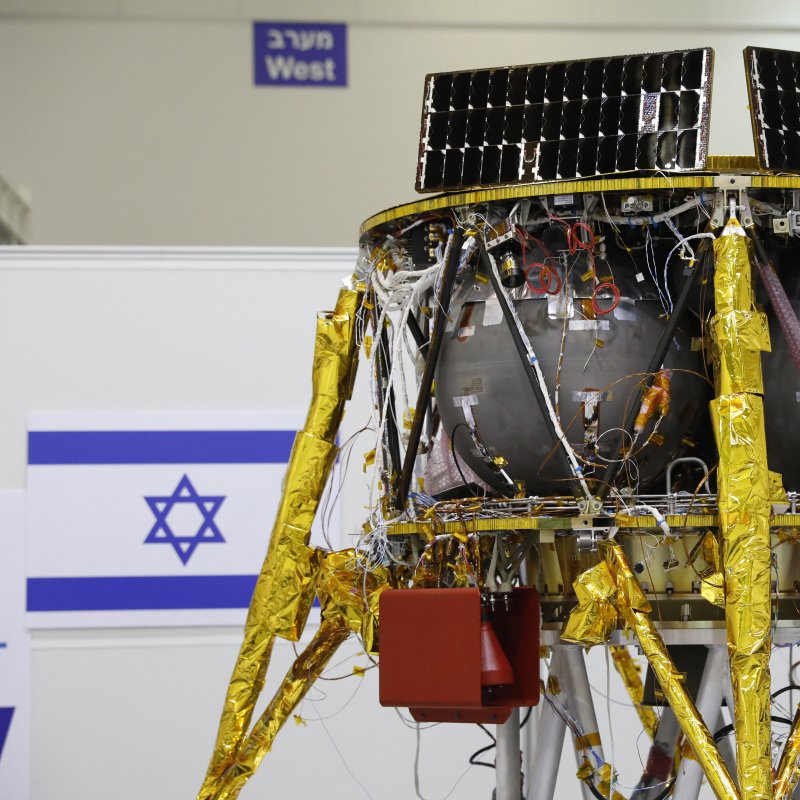The privately funded Beresheet is ready for launch next year. Photo by Abir Sultan/EPA-EFE
Dec. 18 (UPI) -- The world's first privately funded lunar lander is ready for its mission to the moon in early 2019.
The Israeli company SpaceIL and Israel Aerospace Industries loaded the payload -- the prayer of "Tefilat Haderech," the Bible, the Israeli flag, the national anthem and pictures drawn by children -- in a special ceremony Monday. Now, the spacecraft, dubbed Beresheet (genesis in Hebrew) will travel to Cape Canaveral, Fla., where it will be launched aboard a SpaceX Falcon 9 rocket in mid-February.
The rocket will get into synchronous orbit around the Earth, where it will release a communications satellite and Beresheet, which will use its own propulsion to reach the moon.
"Inserting the discs into the spacecraft, which is a real 'time capsule' indicates the spacecraft's readiness to blast off from the launch site in a few weeks," said Ido Anteby, CEO of SpaceIL.
SpaceIL founders Yariv Batash, Yonatan Weintraub and Kfir Damari started the project in 2010 as part of Google's Lunar X Prize competition, which challenged private companies to develop a spacecraft that could land on the moon. The companies are not eligible for the awards because NASA requires the prime contractor to be based in the United States.
The craft weighs about 1,300 pounds and stands about five feet tall.
SpaceIL partnered with IAI to build the spacecraft. For SpaceIL, this was about showing that this could be done. For IAI, this won't be its last moon mission.
"Now there's renewed interest in the moon, and we've got a lunar lander," said Opher Doron, vice president and general manager of IAI's space division. "There is no doubt that the technological knowledge acquired by IAI during the development and construction of Beresheet, together with SpaceIL and combined with the space capabilities developed over more than 30 years at IAI, puts us at the global forefront in the ability to complete lunar missions."
NASA gave SpaceIL a laser retroreflector for laser ranging experiments and will provide communications to the lander through its Deep Space Network. In return, SpaceIL will share data it collects.
More than 1 million Israeli children contributed science and moon-related artwork to the program. All of it was loaded onto special discs that were inserted into the time capsule. There's also a photo honoring Illan Ramon, Israel's first astronaut, who died in the Columbia space shuttle disaster in 2006.















